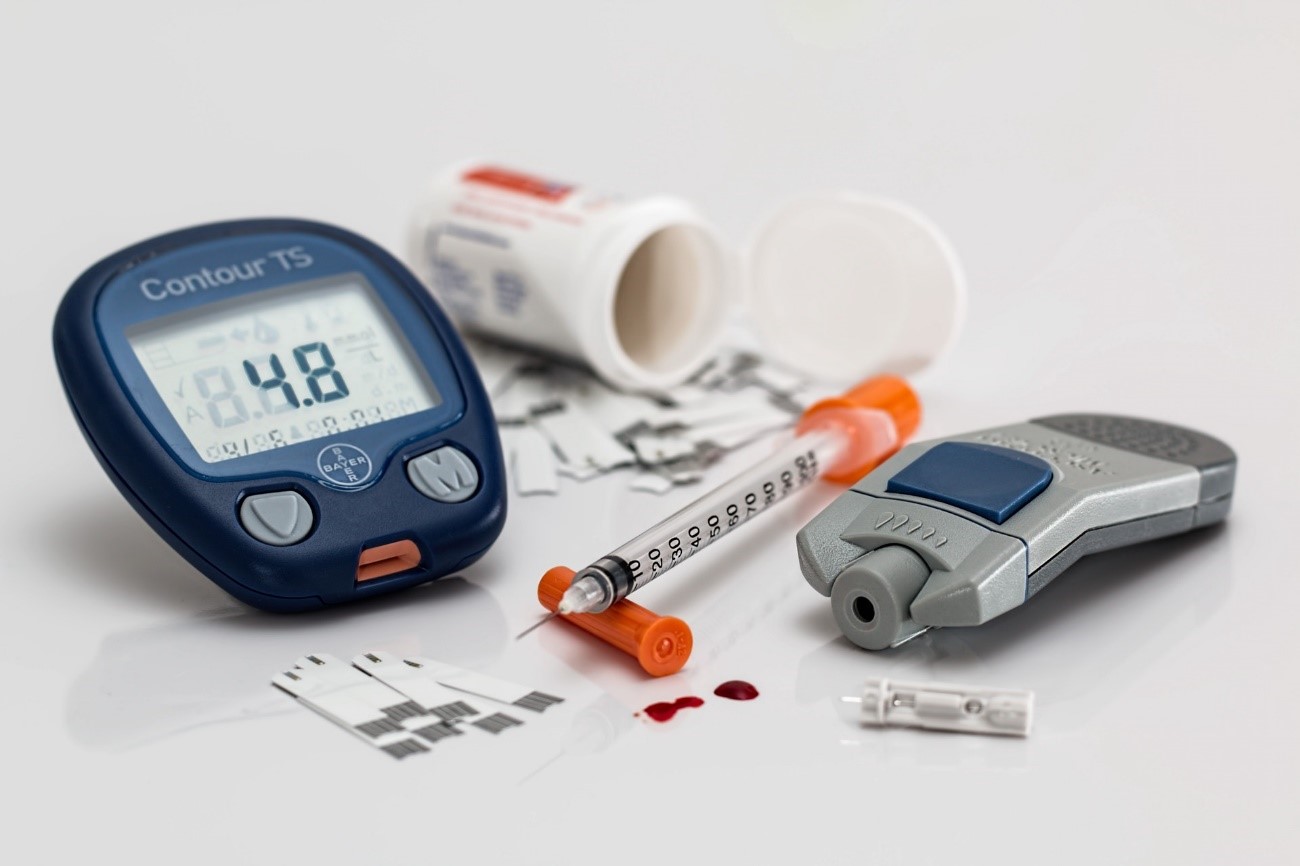World Diabetes Day: Diabetes concerns the family
Stannah joins the world’s largest diabetes awareness campaign, as we all have the right to a healthy future
Stannah joins the largest diabetes awareness campaign, to spread the message that there’s much families can do to prevent diabetes type 2.

The right to a healthy future should be universal. But living well and preventing diseases like diabetes very much depends on access to education, information and awareness. That is why for the World Diabetes Day’s Organisation, the primary aim of the 2018-19 campaign is to raise awareness of the impact that diabetes has on the family and to promote the role of the family in the management, care, prevention and education of the condition.
This is especially important because being aware enables a person to be proactive about reducing the risk of diabetes. And not only seniors should be concerned. Any age group could be at risk and should have access to education and information on preventable measures to better manage their risk.
On this very important date we hope to motivate families to get screened for diabetes and know about diabetes complications. Given the scenario, what needs to be done? 80% of type 2 diabetes is preventable. This is a staggering positive statistic, which means there’s much we can do! Let’s start by understanding why diabetes is a global concern, and why this year the focus is on how diabetes affects families throughout the world.
The Three main Types of Diabetes

| Type 1 diabetes | Type 2 diabetes | Gestational diabetes |
|---|---|---|
| • Risk factors: family history of diabetes, genetics, infections and other environmental influences | • Risk factors: excess body weight, physical inactivity, poor nutrition, genetics, family history of diabetes, past history of gestational diabetes and older age | • Appears during pregnancy |
| • Appears very suddenly and is currently incurable | • Can go unnoticed and undiagnosed for years | • Can lead to serious health risks for both the mother and child |
| • Without insulin, a person with type 1 diabetes will die | • Can often be managed with dietary changes and increasing physical activity. In some cases, medication is required | • Associated with an increased risk of both mother and child developing type 2 diabetes later in life |
Diabetes: A Global Emergency
The World Diabetes Day’s Organisation is the world’s largest diabetes awareness campaign, run by the International Diabetes Federation. It reaches an estimated global audience of over 1 billion people in more than 160 countries. The campaign draws attention to issues of paramount importance to the diabetes world and keeps diabetes firmly in the public and political spotlight.
World Diabetes Day (WDD) was created in 1991 by IDF and the World Health Organisation. In 2006, World Diabetes Day became an official United Nations Day.
The campaign is represented by a blue circle logo that was adopted in 2007. The blue circle is the global symbol for diabetes awareness and it symbolises the unity of the global diabetes community in response to the diabetes epidemic.
According to International Diabetes Federation. IDF Diabetes Atlas, 8th ed, here are some surprising facts about diabetes:
- Three quarters of people with diabetes live in low and middle-income countries
- Two-thirds of people with diabetes live in urban areas (279 million)
- Two-thirds of people with diabetes are of working age (327 million)
- By 2040 1 in 10 adults will have diabetes
- 542,000 children have type 1 diabetes
- 46,5% of adults with diabetes are undiagnosed
- Every 6 seconds a person dies from diabetes
- 12% of global expenditure is spent on diabetes
- 1 in 6 births is affected by hyperglycaemia in pregnancy
- As well as the 415 million adults who are estimated to currently have diabetes, there are 318 million adults with impaired glucose tolerance, which puts them at a high risk of developing the disease in the future.
Could you prevent type 2 diabetes in your family?
When families tackle a problem like diabetes together, the benefits can be many, from improved health for everyone, to less of a feeling of isolation for the person with diabetes. It can feel enormously empowering to take charge of your health, and enormously comforting to know you have the support you need at home.
“There’s a lot of type 2 diabetes in my family. I’ve lost relatives and witnessed close up just how serious it can be.” Nuri
One great way to support the person with diabetes is to join him in his healthy lifestyle, and if Type 2 diabetes runs in the family, this can possibly prevent or delay a diagnosis of prediabetes or Type 2 diabetes among other family members. Learning about diabetes together is another way to support the person who has it and also to inform family members about their risks. Most diabetes education programs welcome the participation of family members in diabetes education classes to learn more about what they can do to support their relative in his daily diabetes management efforts.
The reasons that diabetes runs in families are complex, and they differ between Type 1 and Type 2 diabetes. In both cases, however, it appears that both genetics and environment influence whether a person develops diabetes.
Women and Diabetes

All women who are at risk, or who are already living with diabetes, should have equitable access to the essential diabetic medications and technologies, as well as self-management education and information. This is the only way these women can strengthen their capacity to prevent or treat type 2 diabetes. Socioeconomic conditions affecting girls and women with diabetes make early detection, diagnosis, treatment and care particularly difficult or practically inexistent in developing countries. Furthermore, women in developing countries are more exposed to the main risk factors, such as a poor diet and nutrition, physical inactivity, tobacco consumption and harmful use of alcohol.
Gestational diabetes can also represent a severe threat to maternal and child health, and in many cases, both can go on to develop type 2 diabetes. A girl or woman living with diabetes carries a double burden of discrimination: she must contend with both her health status and the inequalities present in a male dominated society.
Get to know some facts about diabetes in women:
- There are currently over 199 million women living with diabetes. This number is projected to increase to 313 million by 2040
- Diabetes is the ninth leading cause of death among women globally, causing 2.1 million deaths per year
- Women with type 2 diabetes are almost ten times more likely to have coronary heart disease than women without the condition
- Women with type 1 diabetes have an increased risk of early miscarriage or having a baby with complications
- 1 in 7 births is affected by gestational diabetes
- Up to 70% of cases of type 2 diabetes can be prevented through the adoption of a healthy lifestyle
- 70% of premature deaths among adults are largely due to behaviour initiated during adolescence
- Women are most commonly the gatekeepers of household nutrition and lifestyle habits and therefore have the potential to drive prevention from the household and beyond
What Needs to be Done?

Greater education is needed to improve the diagnosis and management of all types of diabetes and to embed lifestyle changes that will slow the rise in type 2 diabetes. While educational programs can help improve health management for people who already have diabetes, better public health education is needed for the general population to encourage behavioural changes to prevent type 2 diabetes from developing in the first place. Early diagnosis can prevent or delay long-term health complications for people with undiagnosed type 2 diabetes. Progress has been made in introducing screening programs, and diabetes risk scores have now been tested in 32 countries around the world.
This enables local authorities and city stakeholders to assess how their city is currently performing in areas linked to the prevention of type 2 diabetes. Cities undertaking the Diabetes Prevention Score will be assessed on six key dimensions:
- Suitability of outdoor environment for sport
- Access to healthy food
- Access to drinkable water
- Education on healthy choices in schools
- Implemented prevention policies
- Accessible information on healthy choices
In fact, the Canadian Diabetes Association has issued Impact goals, which will improve the health of all Canadians, and have established the Diabetes Caucus in the Canadian parliament to champion positive public policy changes at the federal level. Examples of the changes made by the Caucus are Acts eliminating disparities in Diabetes Prevention, Access and Care, Preventing Diabetes in Medicare and Access to Quality Diabetes Education. The Canadian Diabetes Association has a helpline (1-800-226-8464) and news and resources related to diabetes on their website: www.diabetes.ca. They also have a section on each province and territory where you can find events or programs in your local community!
Related articles:
World Health Day: Parkinson’s disease and its effects on mobility and balance
World MS day: “A day to celebrate global solidarity and hope for the future”

 USA
USA